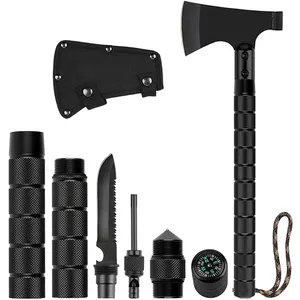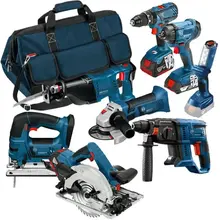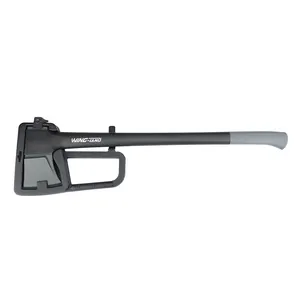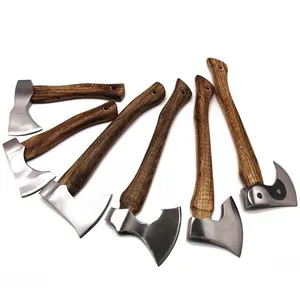An Exploration of Axes: A Versatile Tool for Various Applications
The axe is a tool that has been central to human advancement, serving as a critical component in various tasks from forestry to fire rescue operations. This introduction delves into the diverse world of axes, outlining their types, applications, features, and materials, without making absolute claims or endorsements.
Types and Features of Axes
Axes come in various forms, each designed to fulfill specific roles. The splitting axe, for instance, is tailored for wood division, featuring a wedge-shaped head that easily tears through fibers. Conversely, the felling axe, with its sharp, thin blade, is ideal for cutting down trees. Tactical axes, equipped with features like serrated edges, are designed for more rugged use, often in rescue operations. Each type of axe is crafted to maximize efficiency and safety for its intended use.
Materials and Craftsmanship
The durability and effectiveness of an axe are largely determined by the materials used in its construction. Carbon steel is a popular choice for axe heads due to its robustness and ease of sharpening. Handles, on the other hand, may be made from traditional wood, which offers a comfortable grip and shock absorption, or modern composite materials that provide increased strength and weather resistance. The craftsmanship involved in creating an axe is a testament to the balance between form and function, ensuring a reliable tool that meets various operational demands.
Applications Across Industries
Axes are not limited to outdoor and survival scenarios; they are also integral in professional settings. Firefighters may use a specially designed fireman's axe for breaking through obstacles during rescue missions. In the realm of construction and landscaping, axes prove indispensable for tasks ranging from tree removal to material shaping. The versatility of axes extends to their use in recreational activities such as camping and sports, where they play a role in wood preparation for campfires and competitive throwing events, respectively.
Advantages of Utilizing Axes
The advantages of incorporating axes into various tasks are multifaceted. They offer a mechanical advantage, allowing for more efficient completion of tasks that would otherwise require greater physical exertion. The design of an axe also contributes to its ergonomic benefits, reducing the strain on the user during repetitive actions. Furthermore, the adaptability of axes to different environments and materials underscores their utility as a multipurpose tool.
Choosing the Right Axe
Selecting the appropriate axe is crucial, as each variant is tailored to specific tasks. The weight, balance, and handle length are factors that should be considered to match the tool to the user's strength and the job at hand. For instance, a lighter camping axe may be ideal for portability, while a heavier maul would be better suited for splitting large logs. Understanding the nuances of each axe type ensures that the user can perform tasks effectively and safely.
In conclusion, the axe is a fundamental tool with a rich history and a broad spectrum of modern applications. Its evolution continues as materials and design innovations enhance its functionality and user experience. For those seeking a comprehensive selection of axes, Alibaba.com offers a platform where a variety of axes can be explored, each designed to meet the demands of different industries and activities.










































 浙公网安备 33010002000092号
浙公网安备 33010002000092号 浙B2-20120091-4
浙B2-20120091-4